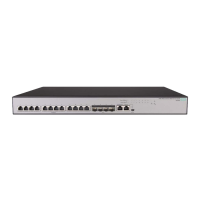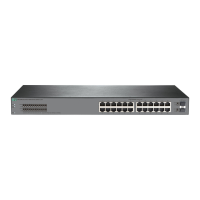30
Figure 36 IRF fabric in ring topology
You can provide the following IRF physical connections between HPE FlexFabric 5710 switches:
• 10-GE IRF physical connection by connecting 10GBASE-T Ethernet ports or SFP+ ports.
• 40-GE IRF physical connection by connecting QSFP+ ports.
• 100-GE IRF physical connection by connecting QSFP28 ports.
• IRF physical connection by using a 40G QSFP+ to 4 × 10G SFP+ cable to connect a QSFP+
port and four SFP+ ports.
You can bind several ports to an IRF port for increased bandwidth and availability.
Identifying physical IRF ports on the member switches
Identify the 10GBase-T Ethernet ports, SFP+ ports, QSFP+, and QSFP28 ports to be used for IRF
connections on the member switches according to your topology and connection scheme.
All the 10GBase-T Ethernet ports, SFP+ ports, QSFP+ ports, and QSFP28 ports on the HPE
FlexFabric 5710 switch can be used for IRF connections.
Planning the cabling scheme
You can use twisted pair cables, SFP+/QSFP+/QSFP28 cables, or SFP+/QSFP+/QSFP28
transceiver modules and optical fibers to connect the switches for IRF connections. If the IRF
member switches are far away from one another, choose the SFP+/QSFP+/QSFP28 transceiver
modules and optical fibers. If the IRF member switches are all in one equipment room, choose
twisted pair cables or SFP+/QSFP/QSFP28 cables. For more information about available
transceiver modules and cables, see "Appendix C Ports and LEDs."
IRF-port2
IRF-port2
1
2
3
1
2 3
IRF-port1
IRF-port2
IRF-port1
IRF-port1

